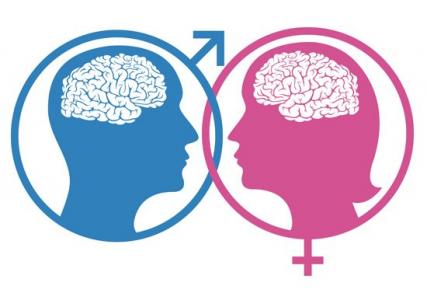Recently, while describing a film to a friend I referred to it as a lesbian love story. Sensing that wasn’t quite right I then followed up with the query, “Perhaps I should have said that it is a passionate love story between two women?” To this, she responded, “Why does it have to include gender at all? Why can’t it be just a passionate love story?”
Good point. Are we ready to give up the well-established gender signposts we have established use to guide for not only, ourselves and in our own relationships; what of but also for those in leadership? Are we ready to shout Hail to the Chief to an individual leader regardless of gender? And are we ready to accept that the actions and attributes of a leader have nothing to do with their gender? Because before we can do so, we must first accept that there really are no differences between the genders and that they are all a social construct.
After nearly four decades as a career woman working within male-dominated corporate management teams, it should not be a surprise that I became intrigued by what made the opposite gender tick. Although I have witnessed extreme, caricature-like gender behaviour from a few of the men I have worked with, nonetheless, I have concluded that our differences are not innate, but rather due to the societal cultural expectations imposed upon us.
The same guys who would, in the safety of my office, passionately discuss with me, concerns for their children, felt compelled to act strong, tough and ruthless when discussing the company’s strategy with fellow executives in the boardroom. They were like musical instruments that tuning themselves to blend in with the opinions, they believed, to be felt were held by others. I adhered to the same, cloaking myself behind attributes of confidence, focus and decisiveness so as to be recognized and accepted as leadership material.
Incidents where my male counterpoints and I dealt with changes to circumstance or audience in the same manner occurred so routinely, that ultimately I arrived at the conclusion that the two genders are not hardwired dissimilarly. When we are born we are labelled pink or blue and then are socialized accordingly. This, influences our self-perception and establishes the stereotypes that we must then live up to. As Harvard psychologist Mandarin Banaji says, “there is no bright line separating self from culture and the culture in which we develop and function enjoys a ‘deep reach’ into our minds”. Thus, what we do, and even what we think, is created and established in terms of societal gender expectations.
These ideas are covered in depth in Cordelia Fine’s book Delusions of Gender where she contends that faulty science based on small samples and ‘leaps of faith’ has been used to justify sexual divergence. Instead of biological differences, which are entirely overblown, she says each of us is a ‘dynamic chameleon, changing from moment to moment in response to social environment’. In spite of attempts at gender-neutral parenting, we are still influenced by our larger cultural environment and so ‘self-socialize’ becoming increasingly unlike as boys and girls.
Perhaps those of us who grapple with this new way of looking at our world should take a cue from the younger regime, those less infected with our disease. Reshma Saujani, lawyer, politician and founder of Girls Who Code told the newsletter Lenny that the generation of millennials don’t really see gender. “Most girls under 15 or so don’t use he and she, instead they are using they and them”, she said. Saujani concedes that this could be because these girls have not yet experienced discrimination, but she aims to have both boys and girls consciously challenging gender norms.
Challenging gender norms is what will ensure better future leaders. Hopefuls will decry a single style of leadership and instead will claim, as their own, all of the vast spectrum of leadership characteristics available to them. Current gender theory has categorizes certain attributes as masculine and some others as feminine which has shaped two distinct types of leaders. On one hand are women leaders who are expected to be collaborative, empathetic, relationship builders and on the other men who are expected to be assertive, action-oriented and focused on the bottom-line. We like and admire men and women who live up to these expectations and distrust those who do not.
Characteristics are not the property of either gender nor, is attribute preference based upon our gender, originating instead, from who we are as individuals. Not until we live in a society that does not categorize by gender will we feel free to access and embody all qualities without judgement. As people and as leaders we must be comfortable to express and dominantly assert a divergent opinion in one situation while whole-heartedly endorsing the collective in another.
Only then will we have the ability to choose the wisest course of action for every in any situation. When we advance our social construct and give up our attachment to gender and with it all that, we think, that to mean, then a story will truly be: just a passionate love story, and a leader will be: simply a great leader. Period.


